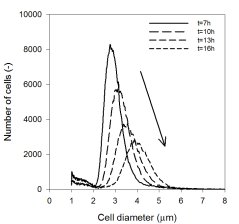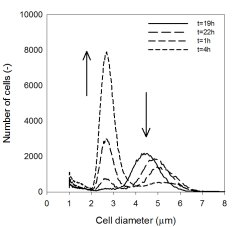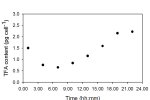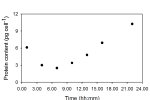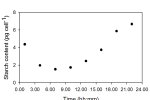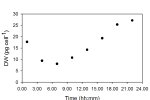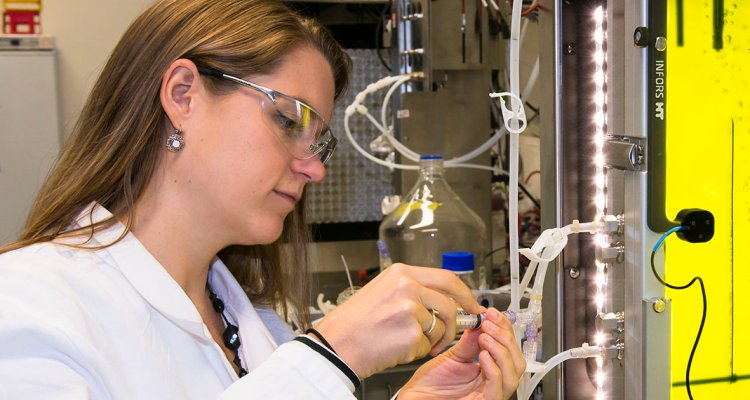
News
Circadian rhythm in algae cells affects cell composition and biomass value
Microalgae have a strong day-night rhythm due to a daylight-synchronized internal clock. Just like in numerous other plants and animals, this biorhythm determines a wide variety of biological processes in the algae cell, including reproduction, growth and cell composition. Understanding algae biorhythms is therefore crucial to further optimize algae culturing and harvest.
Lenneke de Winter, Ph.D. researcher at the Department of Bioprocess Engineering, observed a clear circadian rhythm in algae cells during controlled laboratory experiments. By manipulating light regime, she aimed at optimizing growth of the algae Neochloris oleoabundans. Under continuous light conditions, growth rate fluctuated throughout day and night; night growth was substantially lower as compared to daytime growth. ‘The algae seemed to utilize available light less efficiently during night, resulting in a reduced growth rate compared to daytime growth’, de Winter says. ‘We were wondering about the reason.'
Fluctuating growth rate
To understand more about fluctuating growth rates and possible changes in cell composition in algae, De Winter further studied growing algae cultures receiving different regimes of red light, a wavelength absorbed well by algae. She monitored algae growth during 24 hour periods, by an intensive sampling protocol: every 3 hours algae samples were collected and analyzed for cell size and content. The scientist found big differences between algae sampled during daytime and those sampled at night. ‘During the night, large cells disappeared and small cells appeared, indicating cells were multiplying by cell division’, de Winter says. ‘At the same time, growth rate was limited and dry weight, internal reserves of lipids, proteins and carbohydrates decreased. Probably carbohydrates are used for cell division, but the others are just divided over the daughter cells and therefore amount per cell decreased.’ In contrast, during daytime algae favored growth, resulting in bigger cell size (fig. 1a,b).
Click to enlarge images
During growth, amounts of lipids, starch and proteins per cell increased. Consequently, highest concentrations of these components as well as dry weight values were found at the end of the afternoon/early evening (fig. 2a-d).
The observed day-night differences in growth and cell composition are clear indications that many biochemical processes in the algae cell are controlled by a circadian rhythm, resulting from a daylight-synchronized internal clock. Despite the continuous availability of red light, even a tiny bit of ambient light was obviously enough for the minuscule organisms to synchronize their internal clock with natural light.
Click to enlarge images
Fig. 2a-d. Biomass composition of algae cells during a 24 hour period. Total fatty acids (a), protein (b), starch (c) and total dry weight (d) all show a similar cyclic pattern. Levels reach a minimum during early morning and peak in late afternoon/evening.
When algae were cultured without any ambient light, synchronization of their internal clock was impossible. Consequently, each cell randomly displayed its own day-night rhythm, independently of daylight. As a result, they also showed random productivity and reproduction cycles, resulting in average values of growth and reproduction at any moment during a 24 hour period.
Optimal harvest time
The day-night cycle displayed by algae under controlled, laboratory conditions, is also noticeable in algae cultured outdoors. Like in the laboratory, outside algae grow and increase their biomass at daytime, while concentrations of lipids, starch and proteins peak. At night the cells are dedicated to reproduce. Due to the circadian rhythm, artificially increasing day light time has only limited effects on algae growth rate. ‘The circadian rhythm synchronizes cell divisions, but also growth and consequently determines biomass composition and dry weight’, de Winter says. ‘Algae biomass harvest should therefore be harmonized with this biorhythm to maximize the yield of valuable components. This means the optimal harvest time is during late afternoon.'
